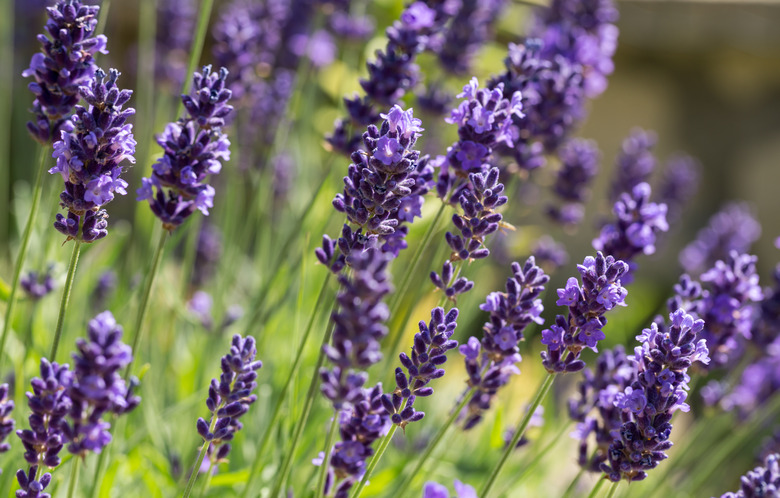How To Fix My Lavender Plant That Is Turning Gray From The Bottom
We may receive a commission on purchases made from links.
Attractive and fairly easy to grow, lavender (Lavandula spp.) is a popular perennial herb in U.S. Department of Agriculture plant hardiness zones 5 through 10, depending on cultivar and species. The plant is as useful as it is pretty, and essential oils harvested from it are often used to reduce stress and anxiety and encourage sleep when insomnia is a problem. Most gardeners experience few if any problems with lavender plants, but fungal diseases can occur — particularly if lavender is grown in a humid environment or gets too much water.
If your lavender plant is turning gray, it's likely that it has either suffered frost damage or is fighting a fungal disease. The solution to both problems is to trim away the affected area. If the problem is fungal, you'll need to go a step further and make sure your lavender plant gets a fungal treatment and fresh soil. You may also need to alter the plant's growing conditions slightly to reduce the risk of future infection.
Things Needed
-
Potting soil (optional)
-
Sand (optional)
-
Water
-
12- to 16-inch pot (optional)
How to Fix Gray Lavender
1. Prune Away Problems
Whether the damage is from fungus or cold weather, removing the gray or dead parts of your lavender plant will improve its appearance and clean away diseased tissue. You'll need to check the plant from head to toe to make sure you prune away every last bit of disease.
- Pull the lavender plant from its pot or gently lift it out of the ground with a shovel.
- Start at the top and work your way down, trimming away any gray or brown stems with a sharp pair of pruning shears. Clean the pruners between each cut by dipping them in or wiping them down with alcohol.
- Continue trimming, checking the plant's roots for problems. Roots should be white and firm. Trim away any that are dark and mushy.
2. Treat the Soil
Sometimes the fungal pathogens that cause plant diseases live in the soil. This means you could reinfect your lavender plant if you replant without treating the soil first.
- Throw away the old potting soil if your lavender plant was potted. Wash the pot thoroughly with warm soapy water and rinse it well.
- Rinse away as much old soil as possible from the plant's roots.
- Apply a granular fungicide to the area in your garden where you plan to replant your lavender. Thoroughly mix the fungicide into the soil at the rate recommended on the label.
- If you're replanting the lavender in a container, fill it with a mix of 2/3 fresh potting soil and 1/3 sand to improve drainage, and make sure the container has adequate drainage at the bottom. Lavender doesn't like wet feet.
3. Replant Your Lavender
Once you've trimmed your plant and it looks good again, replant it. When you do, make sure it's at least 2 to 3 feet away from other plants in your garden. Poor air circulation around a lavender plant can promote fungal infections.
-
Replant the lavender at the same depth of its previous planting and lightly water.
-
Avoid placing potted lavender plants on drip plates. These can hold water and keep the bottom of your plant soggy. Instead, water your lavender in the sink or outside and allow it to drain thoroughly.
4. Amend Your Care Practices
Lavender likes low humidity and well-draining soil. It handles drought better than overwatering, and fungal diseases occur most often in overwatered plants. Now that you've rescued your lavender, it's imperative to care for it properly to avoid future issues. Healthy plants are better able to resist frost, disease and other problems.
- Water mature lavender plants only once every two to three weeks, in the absence of rainfall. Always check before watering, however. If the soil around the plant isn't completely dry, don't water. If you removed mushy roots when trimming your plant, water it lightly immediately after replanting and then leave it alone for two weeks.
- Prune away about 1/3 of your plant each spring when new growth appears to keep it from getting leggy. Focus on cutting back new growth rather than older stems.
- Weed frequently around your lavender, but skip the mulch. Mulch helps retain soil moisture, and lavender may object to this.
- Avoid harvesting or working around your lavender when its leaves are wet.
